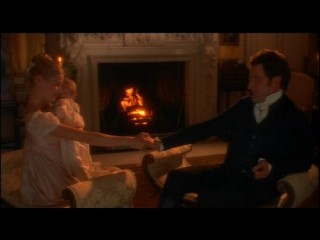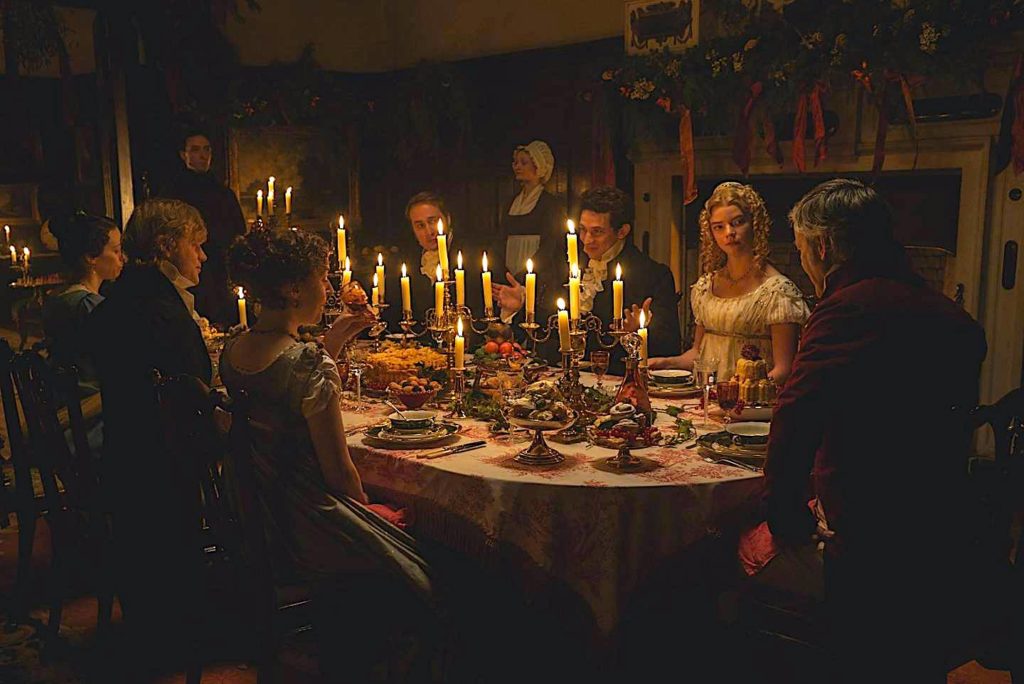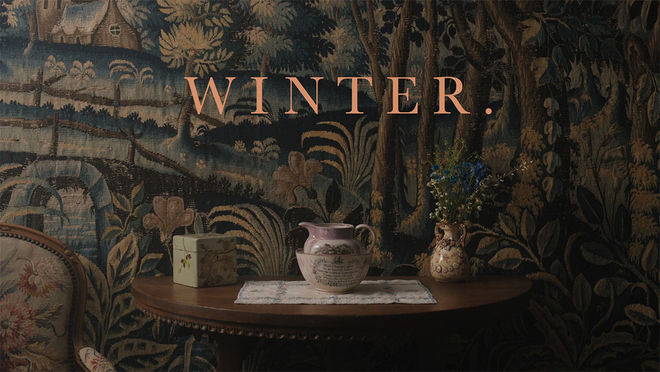Merry Christmas to All, and to Emma a Good Knightley
By Abigail Kunkel
In both Douglas McGrath’s and Autumn de Wilde’s adaptations of Jane Austen’s Emma (1815), Christmas dinner scenes intimate the intersection of the familial love and comfort associated with Emma and Mr. Knightley’s romance. At the same time, these scenes draw attention to Knightley’s often paternalistic love for Emma. Taken together, these scenes at once associate Knightley to the comfort, conventions, and even the colors of the Christmas season, and crystallize his identity as the story’s central patriarchal figure.
De Wilde’s Emma. (2020) shapes its “Winter.” chapter along the intersections of the romantic and familial plots of the story. The chapter opens with the arrival of Emma’s sister Isabella and her husband, John Knightley, to Hartfield. Soon after, the camera centers on an image of Emma and Mr. Knightley’s reconciliation after their most recent spat. Emma holds her baby niece as Mr. Knightley sits by her side, rendering them into a family portrait that foreshadows their future together. McGrath’s version offers the same visual of Emma holding a baby before the fireplace. Knightley sits by her reflecting on their age gap of 16 years. Their conversation brings into sharp focus the fact that he could have held her as a baby. He then reprimands Emma like a child and just moments later looks wistfully at her from behind as she walks away with her sister. While her maternal bent is clearly attractive to Knightley, he remains grounded in the threshold between paternal figure and romantic prospect. The scene solidifies how the romantic and the familial come together in his paternalistic care for Emma.

Following Mr. Knightley’s paternalistic care for Emma in these scenes reveals how the movies position him as the story’s legitimate patriarch. Both movies intimate his masculinity in how they use color. While pastel pinks and greens are the colors of Emma’s wardrobe and home, Knightley’s home and Mr. Woodhouse’s study feature gold and red—colors associated with Christmas, yes, and with wealth and royalty. The color palette reflects the means and power that Knightley and Mr. Woodhouse hold in their community. But it is significant that while Mr. Knightley’s entire home is adorned in those colors, Mr. Woodhouse’s study is the only explicitly masculine space he has access to. Mr. Woodhouse is fretful, silly, and neither conventionally masculine nor a strong patriarch.

Emma is attracted to Knightley because he is a strong patriarchal figure. Yet being with Knightley also means that marriage will not rupture the existing family structure and this comes across in how the films depict the Christmas dinner scenes. Dinner is routinely interrupted by either Emma’s fixation on the idea of Mr. Churchill or Mr. Elton’s increasingly irritating passes at her. Then, the dinner ends abruptly when at once all hasten home to avoid the snowfall and to qualm Mr. Woodhouse’s finicky distress.
A snowstorm whirls as Emma enters a carriage with Mr. Elton where she will reject his proposal. In the McGrath version, Mr. Knightley remains behind after Emma departs. In de Wilde’s version, he leaves ahead of her looking back with a mixture of annoyance and regret. Their separation foregrounds how Emma’s misguided attentions to other men threaten to both delay their union and disrupt the existing family structure. Throughout these incidents, Mr. Knightley remains a stable patriarchal figure, who represents her key to a traditional family structure. He stands in contrast to the inconsistency and frivolity of Mr. Churchill, Mr. Elton, and arguably of her own father. In marrying Knightley, Emma not only avoids disrupting the structure of Highbury’s most important family but also aligns herself with the community’s strongest patriarch.
The blend of romance and family at the center of Emma and Knightley’s relationship primes it for seasonal consumption given our contemporary taste for Christmas rom-coms. In how both McGrath and de Wilde cement the romance in relation to the preservation of the family nucleus, they provide us with a sentimental ending tailor-made for a twenty-first century Christmas favorite.
Works Cited:
Emma. Directed by Autumn de Wilde, Focus Features, 2020.
Emma. Directed by Douglas McGrath, Miramax Films, 1996.




Social Media